You Do ADU, Part 6: Advice from your neighbors who have already done this
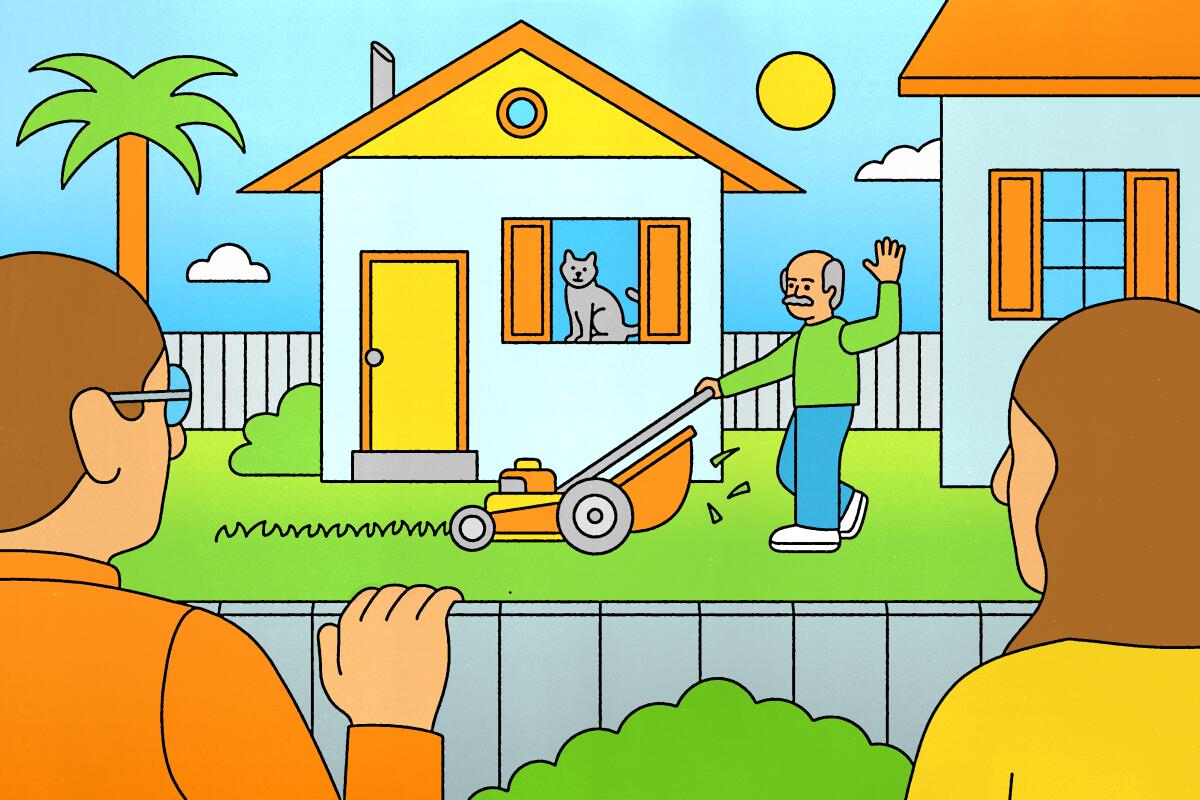
- Share via
Few people are better qualified to answer your questions about building an accessory dwelling unit in Los Angeles than your neighbors who have already gone through the process. That’s why I asked a bunch of them for feedback on your behalf. Hi, I’m Lisa Boone; I’m a feature writer at The Times and have covered ADUs extensively.
This is the final edition of You Do ADU, and as this newsletter series has documented, building an ADU isn’t easy, with numerous potential permitting delays, headaches and surprises. “ADUs are tricky and require professional expertise to strategically work through a variety of complex issues,” said architect Melissa Shin, who built an ADU rental and single-family home in Highland Park for her sister and colleague Amanda Shin. Common dilemmas, Shin said, include difficult compact floor plans, tricky site conditions, code compliance, planning requirements, sanitation, and utility connections and upgrades.
Sign up for You Do ADU
Our six-week newsletter will help you make the right decision for you and your property.
You may occasionally receive promotional content from the Los Angeles Times.
The Times has written about a wide range of Los Angeles residents who have built small homes on their lots to accommodate disabled adult children, aging parents, children and grandchildren, tenants and the demands of working from home.
Bolstered by their experiences, they shared some lessons they learned along the way in an effort to demystify the process.

Planning
Homeowner and designer Samantha Karim, who added a two-story ADU in 2020 for $186,000, suggests starting with a wish list. “Are you going to rent it out, use it as a home office, a guest room, yoga studio, a home for aging parents, a small home business? You need to know how you intend to use the space first before you start going down the Pinterest wormhole,” Karim said.
There’s no shortage of worries when it comes to building an ADU, with money concerns at the top of the list, but many people overlook the importance of placement, said architect Bo Sundius, who added a 750-square-foot cottage on his triangular lot in Elysian Park. “Typically everyone wants to locate the ADU where their garage is or jam it into some other corner of the property,” he said. “This is not a good idea because people forget that whoever is using the ADU will also want some sort of patio or outdoor space. The allure of the ADU is that it’s a tiny house with all of the opportunities of a regular house. So when locating the ADU, I suggest that it does not go all the way to the property line but sits back at least 10 feet to allow for a courtyard.”
If you share a yard, Sundius advises using plants as a screen between the two homes to provide privacy. “After living next to a tenant in our ADU, I can say that it’s really nice that they have their own place for gatherings that doesn’t involve us looking into their yard or vice versa.”
Similarly, Alexis Navarro enclosed the entrance to the ADU on his three-unit property in East Los Angeles to create a private outdoor space for his tenants.
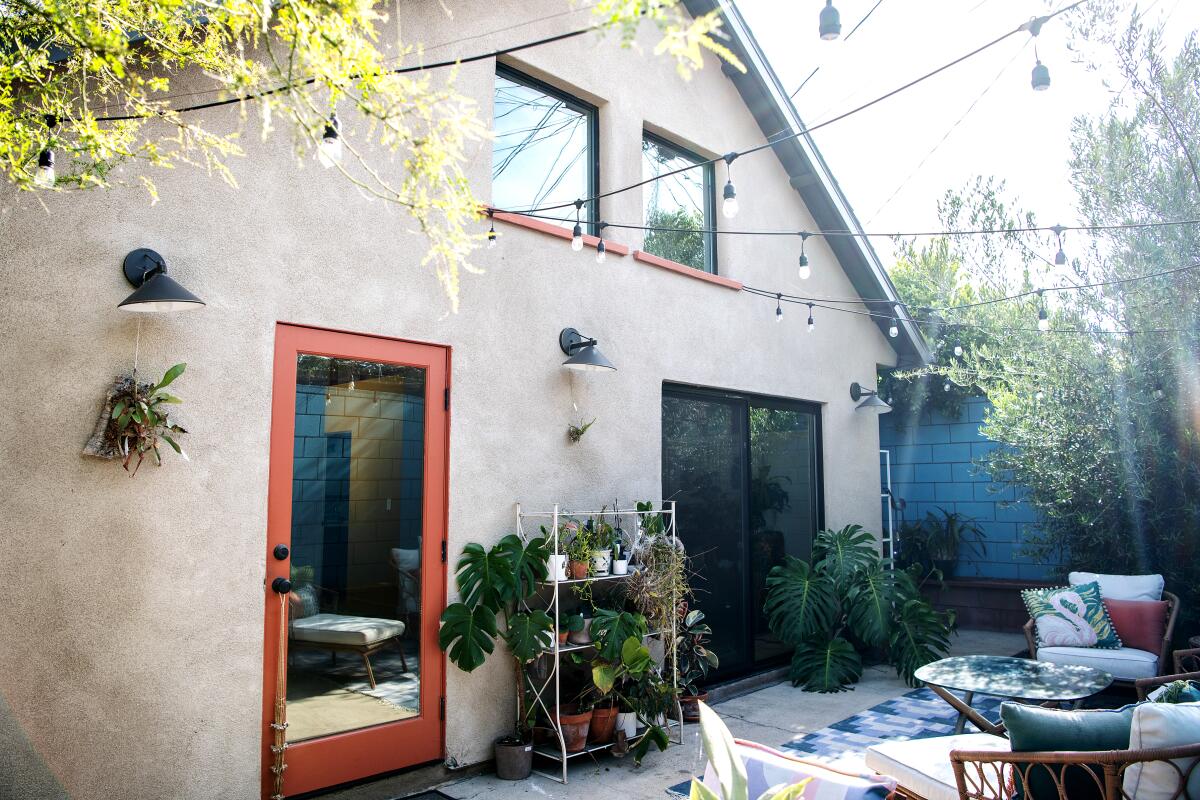
Despite its tiny footprint, constructing an ADU is “the same as building a new house, mostly sharing the same costs, timeline, and complexity,” said architect John Bertram, who added a tiny Richard Neutra-inspired rec room behind his Silver Lake home. “I advise people who are exploring building an ADU that the benefits are largely in a relaxing of zoning restrictions regarding building setbacks and parking.” In situations where a garage is being converted into an ADU, plenty of challenges can arise because the existing structure was never designed to be habitable, he says. “In many cases, the fact that a structure is already present does not translate into significant cost savings.”
“Smaller is not necessarily cheaper,” added architect Cameron McNall, who transformed the garage behind his Mar Vista home into a rental unit. “It’s still expensive because there are so many fixed costs that it doesn’t matter if it’s 500 square feet or 2,000. Smaller can, in fact, be more expensive.”
Because of supply chain issues and material costs, windows and doors are taking many months for delivery, so order them on day one of construction. Additionally, Chantal Arnoult, who added a two-story ADU in her Mar Vista backyard, recommends ordering a mini-split for air conditioning and heating far in advance so the installation doesn’t hold up the project.
Rion Nakaya, who built an ADU to house her mother in South Pasadena, recommended taking advantage of federal tax credits for residential solar energy. “Including solar panels in the build plans (with the installation before the walls are closed) is more efficient and accessible than adding them later,” she said. “Consider electric heat-pump technology like a cooling/heating mini-split, as well as gas-free induction cooktops and ranges.” Other credits and rebates may be available for appliances or other upgrades.

Likewise, make sure you have grey water and rainwater plans in place so that plumbing and landscaping are integrated early. “Shower and laundry grey water systems can irrigate your yard all year long, saving water and money,” Nakaya said. “Calculating potential rainwater from off the rooftops, assessing your topography to prevent flooding or standing water near the structure, and directing rainwater into your plants’ roots with basins, swales and French drains are all smart, low-maintenance investments.”
In zones that allow for multiple residences, such as R-3, it may be better for homeowners to add an extra unit instead of an ADU, Navarro said. “Instead of being a single-family residence with an ADU, it will be a duplex. This seems to be appraised at a higher value, which will give the owner more equity.”
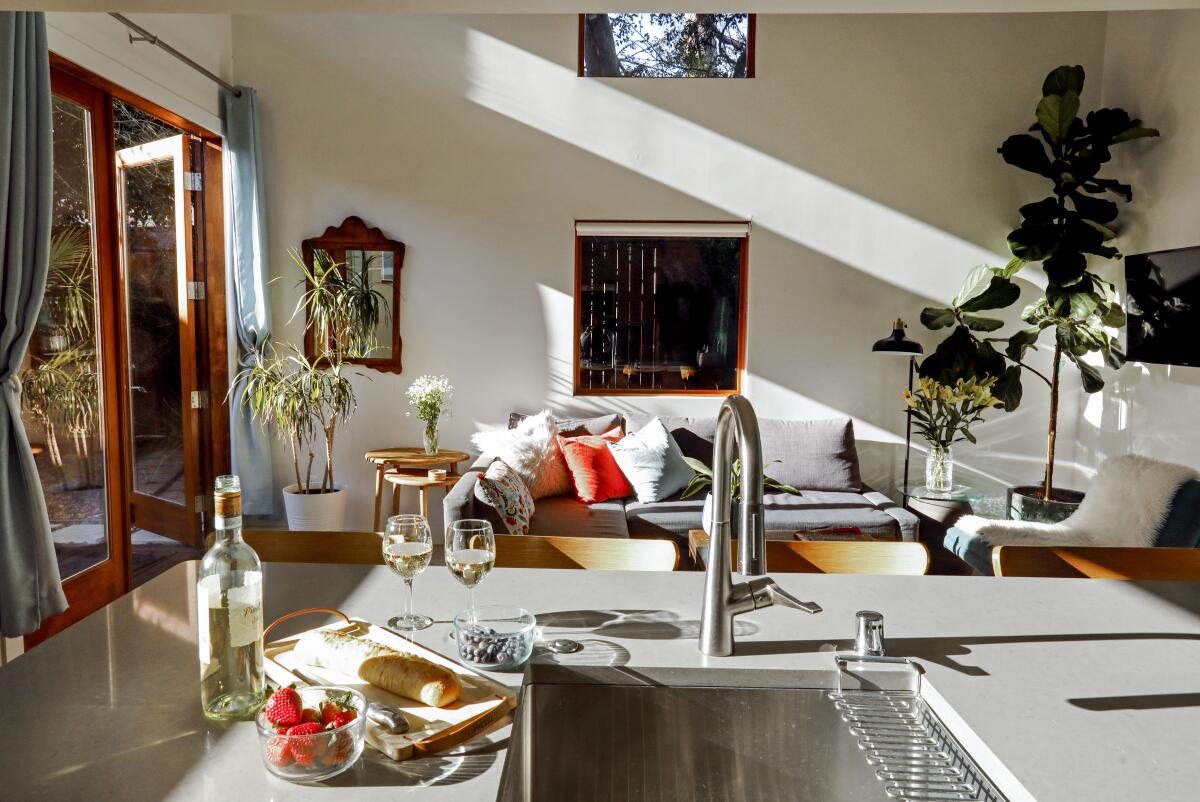
Design
We want to hear from you
Are you building an ADU or considering one? Do you have insights to share or unanswered questions? Or horror stories? Tell us.
Good design is invaluable, especially when it comes to living in a small space. Many homeowners may underestimate the value of a good floor plan. Karim said: “Pay an architect for good design, and you will have less design mistakes. You wouldn’t build your own house without an architect, so why miss out on a good design eye with your ADU?”
Be kind to the neighbors, said architect Isabelle Duvivier, who designed an ADU with raised windows for her sister that look out on a Chinese elm and other trees to provide privacy for the neighbors. “Design the building to minimize the height and sun loss to adjacent structures.”
Since ADUs can be built where dwellings once weren’t allowed, there is potentially “an outside impact on adjacent neighbors regarding privacy,” Bertram said. “I strongly suggest to clients that they consider and try to honor their neighbors’ privacy. This is where I think good design can have the most positive (or least negative) effect. We live in a community, and so we need to get along!”
Navarro, who built an ADU behind his triplex rental property in East Los Angeles, said you should “max out the square feet of the ADU — as long as it’s within your budget. ... Once it’s built, it’s done, and additional space will not be cost-effective.”
Speaking of storage, Navarro said, “There’s never enough.” Tricks to consider include using an access panel for storage above the ceiling; lowering ceilings in nonhabitable spaces like stairways, bathrooms and laundry rooms; and adding storage above cabinets in cathedral ceiling conditions.
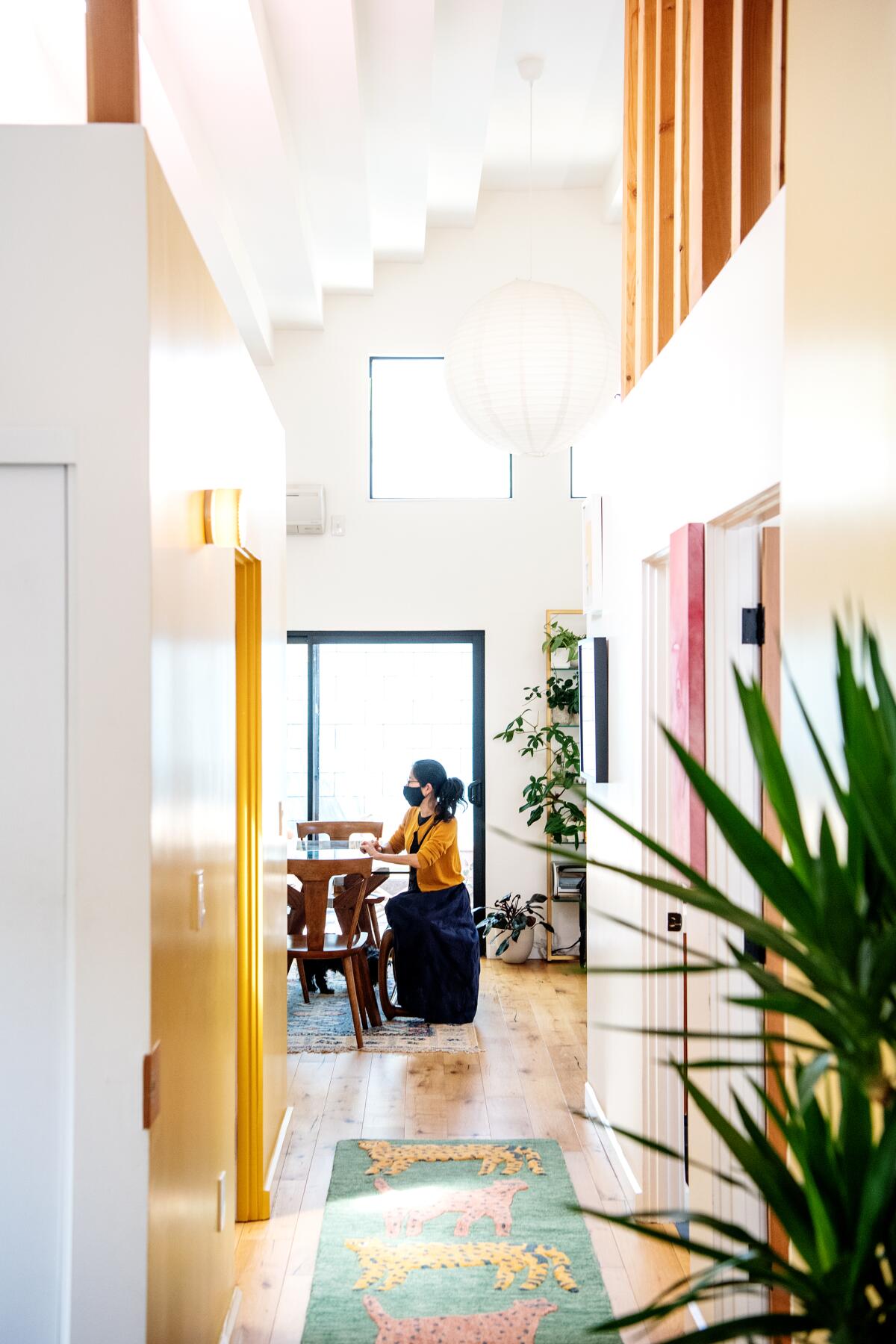
Vaulted ceilings and some variety in ceiling height are great ways to make small rooms feel larger.
Consider the orientation of the sun (especially the south orientation in Southern California) to decrease the use of air conditioning and furnaces, advised Navarro. Large windows in large rooms facing south will absorb the sun’s heat and keep rooms warm in the winter, while a large overhang will help keep rooms cool in the summer. An abundance of natural light is essential for making small spaces feel larger. Navarro recommends using skylights or dome sun tunnels and maximizing window sizes for more light.
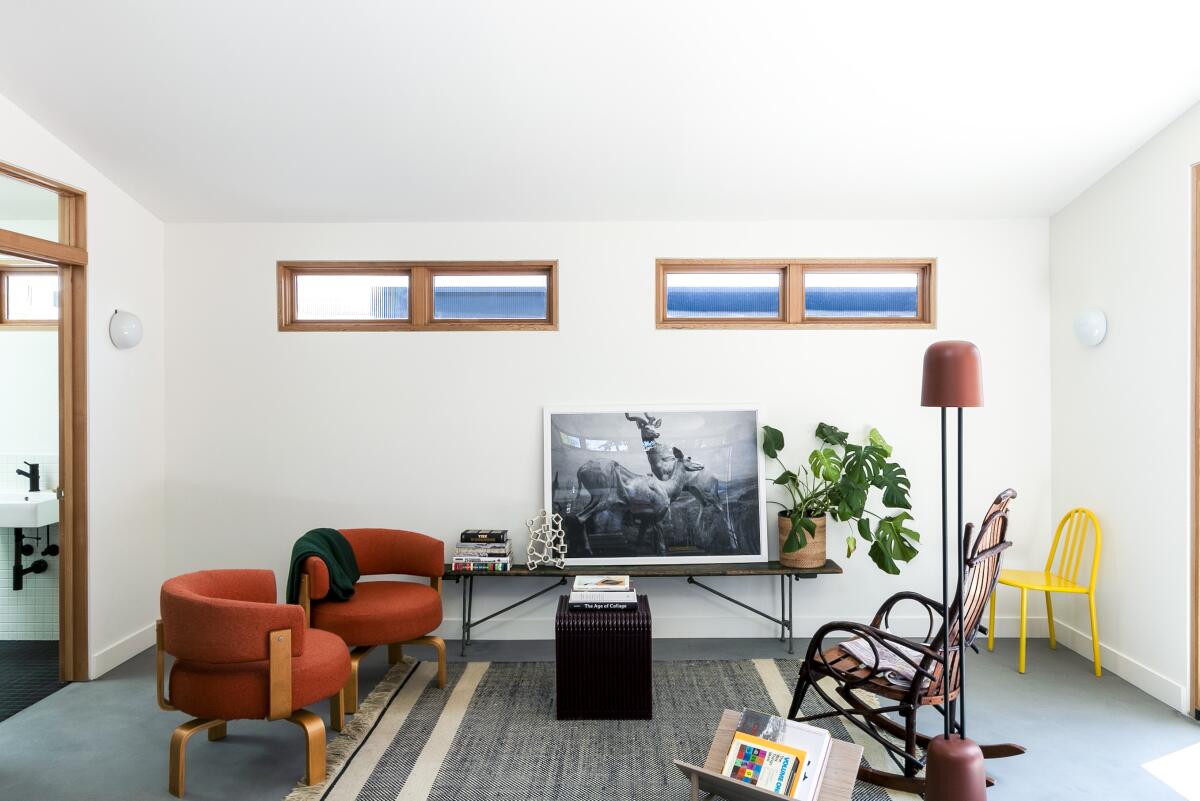
Raised windows can maximize privacy and light. When Justin Nasatir and Mara Grobins Nasatir transformed their 600-square-foot, alley-facing two-car garage into an ADU, they wanted the unit to feel like a home, not a garage.
“We wanted it to have light and be comfortable, but at the same time, we didn’t want people looking in the windows,” Mara said. “Because it’s on a commercial alley with large trucks driving through, we also didn’t want people to feel like the alley was right there.”
Although there are no windows on the east wall of the unit, it receives a surplus of southern light thanks to a folding door and a series of clerestory windows, shown above, that are arranged on a grid, with reeded glass for privacy.

Mobility challenges take many different shapes but can be addressed easily when starting from scratch. “When I chose the door handles, I chose a lever handle because my mom said it was hard to grasp the round knobs in our house,” Mara said. “We were concerned about tripping hazards and accessibility,” she added, noting her ADU’s polished concrete floors. “We wanted to make sure that people can get in and move around easily.”
Pastor Alvarado and Gennifer Leong-Alvarado installed a small step to the deck that connects their home to their 500-square-foot ADU, which can be easily ramped should their parents need it in the future. The ADU offers an open floor plan with smooth concrete floors and a large and open bathroom with no level changes for easy access.
In Culver City, Joey Chavez and Andrea Villicana added a 500-square-foot ADU behind their home for their disabled adult son. The unit features smooth wood floors and wide, wheelchair-accessible doors. In addition to the main bathroom, which includes a curbless shower with a handheld shower head, a powder room was added to provide privacy for potential caretakers.
Small-space living is a big trend in Southern California. Get inspired by these local ADUs and learn how to plan your own build.
Money
Your property taxes will increase significantly if you build an ADU. If this is a concern, call the city’s property tax department to get an estimate. Mona Field, who converted her Eagle Rock garage to house her daughter, son-in-law and grandson, said her property taxes rose when her addition was reassessed, but she felt the increase was reasonable given how much the ADU adds to the value of her property. With property tax rates typically around 1.25% statewide, an ADU valued at $200,000 will raise your annual tax bill by $2,500.

People should expect that original cost estimates will increase, Field said. “No matter how carefully you plan, there is always some glitch that is going to cost more than you anticipated.” Be sure you have enough money for the unexpected.
“I thought we could do it for $100,000,” Nicole Fitzgerald said of the 290-square-foot ADU she and husband Rick Steil built behind their Pacific Palisades home. “But once we laid out everything we wanted, it was clear it wasn’t going to work. Utilities were a big expense. They had to trench down the driveway to get to the garage.” When the ADU was finished in August 2021, after eight months, the couple ended up paying more than twice what they anticipated — $250,000.
Grace Kuo, who added a prefab ADU for her daughter and son-in-law, said the original budget went up by 24% from the initial bid. Her eventual price tag: $475,000. “With supply chain and budget issues, don’t be surprised if the budget goes up,” Kuo said. “But that’s what is happening with everything.”
Windows and doors may add light to tiny floor plans, but they can be expensive. “My collapsing door is amazing,” said Bridget Bousa, who added an ADU rental in the Fairfax district. “But it cost $15,000. I was shocked. That was a tough pill to swallow.” Ultimately, all of the windows plus the sliding doors cost more than $30,000.

Southern Californians are racing to build accessory dwelling units — or ADUs — small, fully equipped homes on the same lot as a larger house. But building an ADU can be complicated and expensive. Architect Bo Sundius of Bunch Design suggests you keep these considerations in mind.
Building process
We’ve profiled a lot of glamorous garage conversions with happy endings, but there are nightmares too. To avoid construction pitfalls, use licensed local contractors with multiple references — some readers have advised as many as five or six — who do the work themselves and don’t use unlicensed subcontractors.
When Bousa reached out to the contractor who was working on her neighbor’s house, he initially said no. But ultimately, he decided to convert her garage into an ADU because his crew was working nearby.
Architect Bertram sums it up: “There is nothing better than a good contractor and nothing worse than a bad one!”
Other tips include:
- Get the contact information of the city inspector assigned to your project.
- Attend city inspections and take notes.
- Get written timelines weekly on work to be done.
- Check the roof structure to avoid leaks during the first rainfall. If you have concerns about the roof during construction, contact the Los Angeles Department of Building and Safety and ask for an inspection. If you want to take it a step further, the National Roof Certification and Inspection Assn. recommends hiring a licensed roof inspector, who will issue a detailed written report for a fee.
“All the good subcontractors are swamped dealing with city inspection delays, material delays, and general work malaise,” Sundius said. “Everyone forgets that these construction guys worked through the entire pandemic, and everyone is exhausted.”

Keep in mind that expediters aren’t just for architects and developers. Anyone can hire one.
According to architect Bertram, a half-dozen or more agencies and departments need to sign off on your project in order for it to be approved, including City Planning, HPOZ, LADWP, LADBS, Bureau of Engineering, Grading Department and Green Building.
“A good expediter will safely navigate the process and successfully shepherd your project through the city,” said Bertram, who uses an expediter from the beginning of the planning process. “They will also anticipate and troubleshoot issues, and can often deal directly with supervisors should a plan checker misunderstand their own codes. Years ago one of the most senior members in the expediting firm I work with (who spent decades at the planning department) said that it is no longer possible to keep track of all of the code changes and all of the various agencies with overlapping and often conflicting requirements and restrictions.” The expediter, he added, will prepare a due diligence report that will demonstrate what is possible.
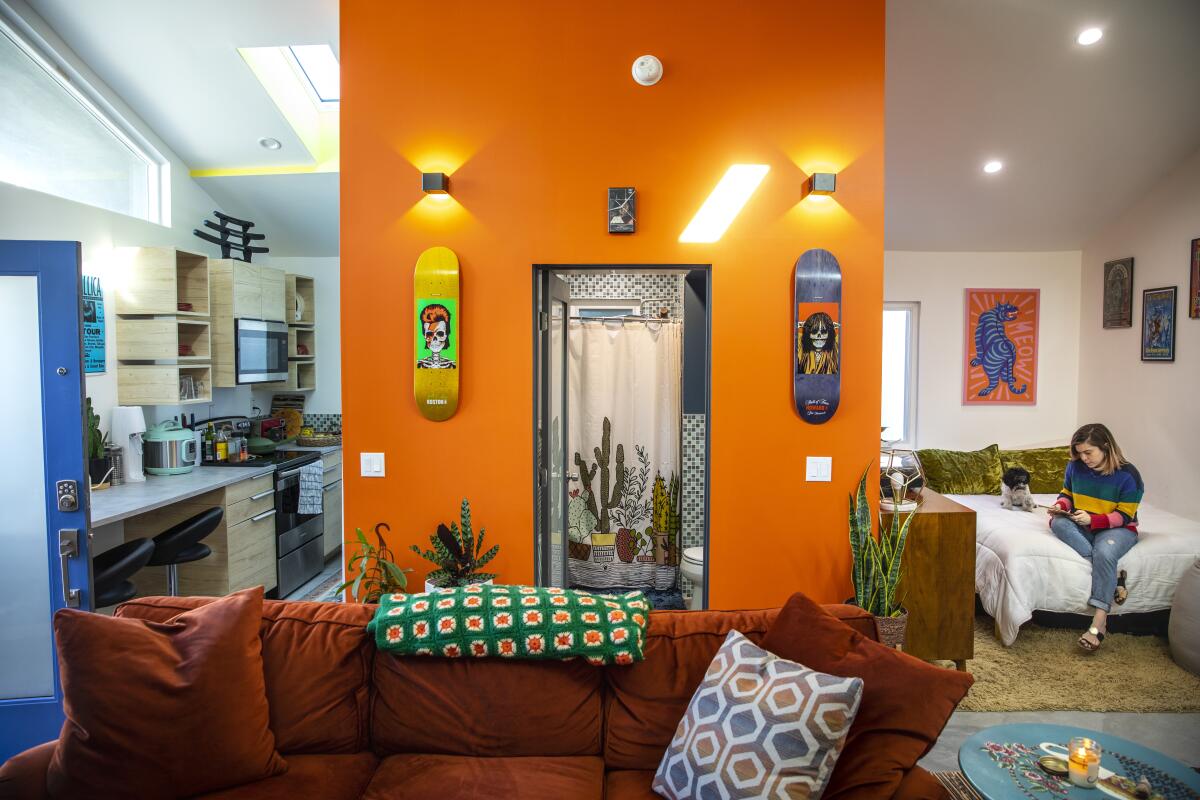
Some homeowners were surprised to learn that their single-family home — and not just the ADU they added to their lot — is now considered multifamily housing and falls under the city’s Rent Stabilization Ordinance, a law that limits rent increases and restricts evictions. Such surprise may be warranted given that in Los Angeles, single-family homes are not covered by rent control. This could be problematic for homeowners who want to live in their ADU and rent out the main house.
“People should have their eyes wide open going into the build,” Karim said. “I knew the ADU would be under the RSO, but I didn’t realize the main house would also fall under the RSO. This is not ideal for our family as we can no longer short-term rent out our main house when we travel.”
“My single-family home is now under both the rent stabilization ordinance and the systematic code enforcement program of the city,” Field said.
Homeowners are expected to register their rental property, pay fees and report vacancies. Field said it doesn’t diminish the value of being able to provide affordable housing for her family, but she acknowledged that city bureaucracy can be a hassle. “It took me hours to figure out what they are talking about, why I owe them money and how to respond to their paperwork,” she says.
Before you start building, make sure a utility department inspector confirms there are no electrical issues related to the unit, said Arnoult. Los Angeles Department of Water and Power utility easements are located in many backyard areas, and getting the DWP’s approval can take several months and significantly delay permitting (and the start of construction).
People often don’t consider the fact that new homes must sit five to six horizontal feet from power lines. “ADUs are often closer to the power lines, so you have to get approval from the LADWP, and they are overwhelmed with ADUs right now,” Duvivier said.
After the foundation was poured for her ADU in West Hollywood, Bousa was forced to get another survey because the city was concerned the ADU did not adhere to city setback requirements. “Just to get another survey took 10 days,” she said.
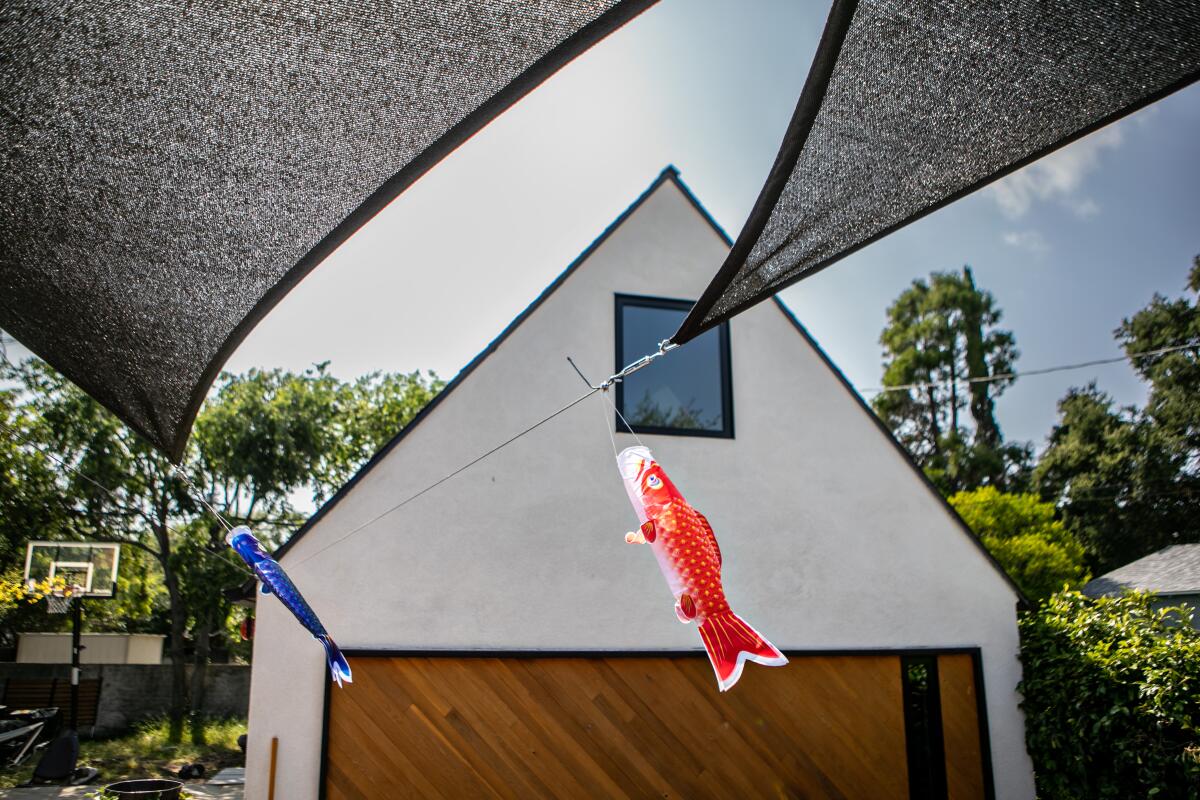
Historic districts like South Pasadena, Hancock Park and Windsor Square can pose unique challenges for ADUs, so it’s important to reach out to Historic Preservation Overlay Zone staffers as early as possible to ensure that any special requirements are well understood and correctly applied.
Because Michael Cosentino and Rion Nakaya’s home is in a historic district of South Pasadena, for instance, architects Gretchen Krebs and Ian Read were required to design an ADU to look like a garage because it would be visible from the street.
Clearances for building permit applications — affecting sanitation, zoning and more — can slow things down, Shin said. “Those take longer, and some have to be done in person. That’s just for the city of L.A.,” Shin said. “L.A. County has backlogs of up to six months. It can take you a year to get through plan check for a simple ADU.”
Finally, be patient. ADUs are a long-term investment. “They don’t return on that investment for several years, but overall they add significant value to a property if done correctly and legally,” Navarro said.

More Los Angeles ADUs
How a teeny-tiny ADU completely transformed their L.A. yard
A century-old Craftsman in L.A. is used as a blueprint for a new ADU
They worried about long-term housing for their disabled son — until they built an ADU
This ADU rental with windows galore is a houseplant lover’s dream
How an aging Tudor’s ADU reunited a family and brought them closer together
They were spending all their income on rent. A garage turned ADU saved them
How a struggling single mom built an ADU, without killing a 60-year-old tree
How an unremarkable alley-facing garage in West L.A. became a stylish ADU
They turned a house full of cockroaches and code violations into a ‘must have’ home — and ADU
They turned a one-car garage into a stunning ADU to house their parents. You can too
He challenged himself to build an ADU for under $100,000. What’s his secret?
She built a granny flat in Echo Park: How it saved her during the pandemic
Thank you for subscribing to You Do ADU. Like all our newsletters, it’s free, but we rely on your support to deliver the news that matters most. Please consider subscribing.
Sign up for You Do ADU
Our six-week newsletter will help you make the right decision for you and your property.
You may occasionally receive promotional content from the Los Angeles Times.






